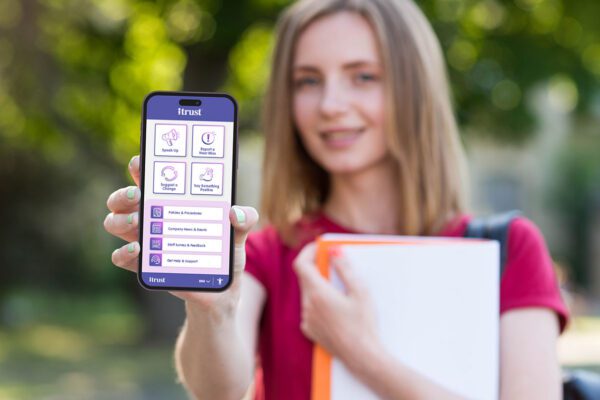SAP ERP-IoT integration
Manufacturer connects factories to the back office with a custom IoT integration solution
egforit Software designed an SAP ERP-IoT integration solution that connected factory and customer data for greater business transparency and performance.

Executive brief
Achieving transparency with SAP ERP IoT integration
Our client is a manufacturer and supplier of high-tech industrial systems. With customers worldwide, the client has offices in Europe, Asia, and North America. Our systems integration experts designed and delivered an IoT integration solution for the manufacturer’s SAP ERP system, which enabled:
synced factory and ERP data
better financial forecasts
reduced manual data input
improved service times
Curious about how we achieved this with internet of things integration? Read on to learn more.
The full story

The challenge
Disconnected IoT and ERP were slowing growth
Today’s IoT technology provides the kind of real-time factory data that manufacturers have always dreamed of. Seeing how competitors were using IoT tools to their advantage, our client was eager to follow suit.
The use case for adopting an IoT solution was simple: sensors would be attached to the machines that the client shipped to customers’ sites, and the IoT software would interpret the data from these sensors. This data would then be used to understand the products’ performance and predict which machines would likely require replacement or repair. This information was also crucial for the finance team to estimate the cost of upcoming warranty claims.
The client’s chosen software, called ConNXT, is an out-of-the-box cloud solution for monitoring, analysis, and control of IoT-enabled devices. But while the ConNXT software worked well in itself, it had no built-in integration with the client’s back-office systems, most importantly its on-premise SAP ERP software.
This lack of integration between the ConNXT IoT software and the company’s SAP ERP caused the following issues:
- the finance team did not have real-time data on product repairs and replacements
- the repair team was unable to match IoT data to customer details for each product
- these had an adverse impact on customer service and back-office efficiency
As part of its longer-term integration strategy, the client saw that SAP ERP-IoT integration had to be the next step in its digital transformation.
The solution
Delivering a custom SAP ERP IoT integration solution
Our team had not worked with ConNXT software before this project — but thanks to our systems integration expertise, we were quickly able to devise a solution. Having previously delivered multiple Azure-based integration solutions for this client, it was logical to leverage that platform again. This ensured faster development and a single, easily manageable integration hub for the client’s use.
The SAP ERP-IoT integration we delivered included the following steps:
- a REST API connection between the IoT software and the client’s Azure cloud
- an Application Gateway leading into the client’s Azure API Management layer
- Azure Logic Apps configured for connection with SAP ERP
- an on-premises data gateway giving secure access to the client’s on-premises SAP ERP
When connected together, these elements allowed data to flow from the IoT application to the SAP ERP and vice versa.
Our team in this project comprised a chief architect, a QA tester, a DevOps engineer, and a project manager. Working in agile sprints, we demonstrated our progress to the client fortnightly. In this way we managed to overcome any unforeseen adjustments and challenges within the client’s specified time frame.
Completing the project in fewer than 11 man-days, our team achieved the desired IoT integration solution with time to spare. And the client now had the real-time connectivity that enabled its factory and finance teams to excel at their core tasks.
The benefits
A cost-effective IoT integration solution
By building the SAP ERP-IoT integration in Azure’s low-code cloud, we managed to keep development and operation costs low. This value-driven approach, alongside our technical expertise, is the driver behind our long-term relationships with clients such as this manufacturer.
In summary, the key benefits of this IoT integration solution were:
- the elimination of manual data entry between IoT and ERP systems
- the ability to accurately report on and predict product performance
- increased customer satisfaction due to faster repair response times
- objective feedback for product development and optimisation
Based on this IoT integration solution and related projects, egforit has become this manufacturer’s integration partner of choice. Our other recent integration successes include implementing an Azure API management layer and building an integrated document retrieval system for eCommerce. Each of these projects brings the business closer to its aim of removing the barriers to business growth, now and in the years to come.
Integrate IoT data quickly and easily
This company is one of dozens that benefit from our internet of things integration expertise. To find out more, visit our integration solutions page.


